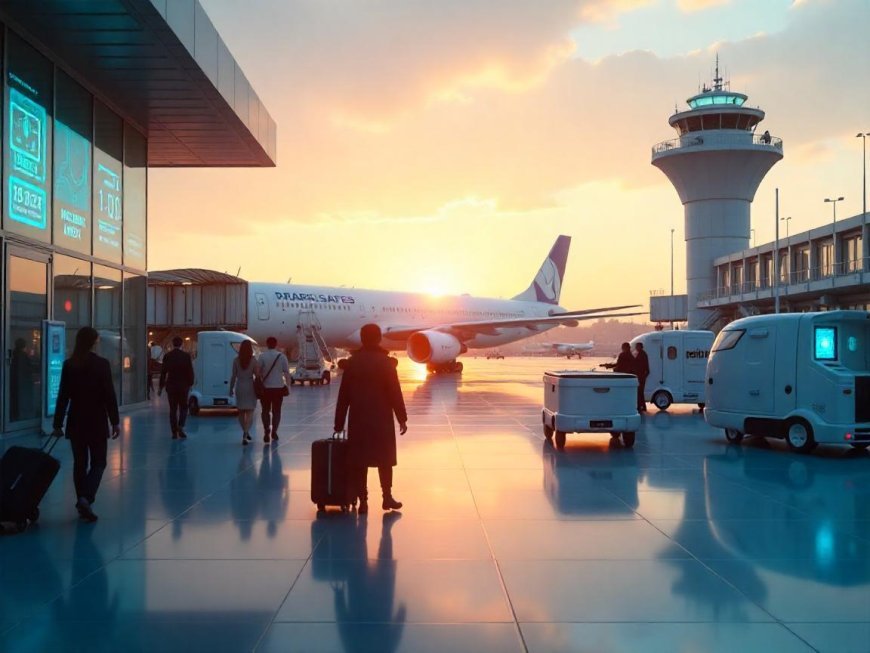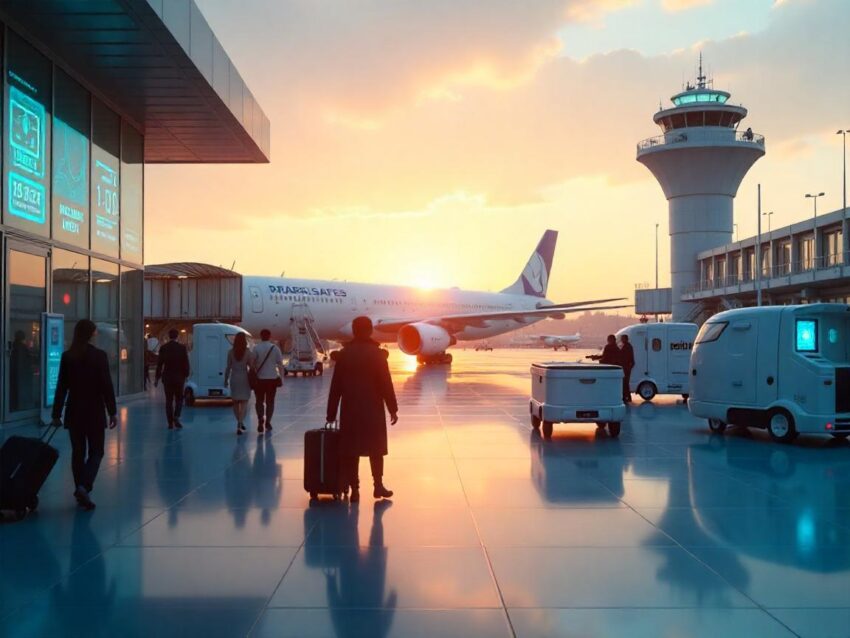Aviation’s AI Boom: How AI Is Reprogramming The Future Of Aviation, Here’s What You Need To Know


AI aviation is no longer the next-big-thing—it’s starting to become ubiquitous, the central nervous system that will soon monitor and anticipate every move in a vast and complicated global network of winged machinery. With the AI in aviation market estimated to grow from $1.75 billion in 2025 to $4.86 billion by 2030, at a CAGR of 22.6%, the industry is witnessing a new digital era, characterized by automation, intelligence, and sustainability.
Transforming The Aviation Ecosystem
AI is reaching every part of aviation, from air traffic control and maintenance to customer service and environmental sustainability. The potential of AI is not just that it can automate, but that it can optimize. Airlines can also employ predictive analytics to decrease delays, optimize maintenance schedules and offer personalized services to passengers. Meanwhile, smart airports are also becoming a thing—with AI that books biometric boarding, tracks baggage, monitors security and length of lines.
This change is also affecting OEMs such as Boeing and Honeywell who are integrating AI into their aircraft systems for real-time diagnostics and autonomous functions. Meanwhile, Maintenance, Repair, and Overhaul (MRO) crews are relying on AI for predictive intervention—spotting mechanical malfunctions before they result in cancellations.
The Technology Behind The Shift
Dominating this transition are strong AI technologies such as supervised learning, computer vision, natural language processing and sensor fusion. Of these, supervised learning has been the most matur e and is one of the most trusted approaches in aviation— because it is based on labeled, explicable data.
It is for this reason especially well-suited in critical applications such as predictive maintenance, air traffic optimization, and pilot support. Airlines and MRO providers depend on these systems for more than efficiency – for safety and regulation, they are also crucial where complete transparency and accuracy are non-negotiable.
Smart Airports: Infrastructure Takes The Lead
By 2025, the infrastructure component will lead the way in the industry’s AI adoption with huge investments in digital transformation at airports. Contemporary international airports are intricate ecosystems handling passenger flows, baggage logistics, security screening, and aircraft manoeuvres – all happening in real time.
AI helps manage this complexity. Airports such as Singapore’s Changi, U.K.”s Heathrow, and the U.S.’s Hartsfield-Jackson are already implementing facial recognition, using automated gate assignment systems and employing A.I. to monitor environmental conditions. AI systems watch over ground vehicles, track runways and predict potential bottlenecks before they become disruptive to operations.
North America at the Helm
North America is at the forefront of AI in aviation, powered by the well-established infrastructure, large R&D spends, and policy support. The U.S. Federal Aviation Administration (FAA) has already begun test projects that incorporate AI components into air traffic control systems, predictive analytics, and even virtual pilot training scenarios.
Both tech giants like Microsoft, IBM, AWS etc, as well as airlines and airports authorities are now forming consortia to launch cloud hosted, AI platforms. These partnerships are building the base for scalable intelligent aviation solutions. Even Canada’s airports are testing passenger flow monitoring powered by AI and digital apron surveillance.
Sustainability Takes Flight
With the aviation industry under increasing pressure to reduce omissions, AI is becoming instrumental in sustainability. AI models are optimizing fuel usage and finding the best flight paths from point A to point B, and are even tracking emissions at the fleet level. These advances can be used by airlines to reduce the carbon footprint and to comply with emerging worldwide climate regulations.
AI is also optimizing maintenance for longer life, by reducing the amount of parts replaced, less downtime, saving resources and saving the environment.
Passenger-Centric Innovation
The modern traveler wants travel to be frictionless — and AI smooths the way. And from personalized travel recommendations and dynamic pricing, to frictionless biometric boarding and AI-fueled concierge bots, airlines are reimagining the passenger experience. AI is also helping to make security checks safer and more efficient and enable smoother transfers and predictive rerouting in case of disruption.
Trust remains key. For AI to succeed in passenger-facing roles, data privacy, reliability and transparency — particularly in sensitive applications such as facial recognition or ticket fraud identification — must be ensured.
Challenges On The Horizon
But as promising as A.I. is for aviation, it is not without challenges. Security continues to be a hot topic in the context of already flying AI systems and security procedures. There are also ethical and legal issues surrounding data governance, surveillance and algorithmic bias.
The work force is so, as well. If AI provides automation for the drone warfare “system,” it also requires new human abilities to function—a requirement for pilots, engineers, and ground crew to be trained in digital tools and literacy in AI.
Conclusion: The Flight Path Ahead
From intelligent airports and green skies to hyper-personalized travel and operations in realtime, AI is transforming what we know as flying. The road to 2030 will be paved with innovation, cooperation and regulation. It will take collaboration among governments, technology providers, airlines and academia to construct a smarter, safer, and more sustainable aviation ecosystem.
The engines are revving. AI is ready to take off and its ascendency is clear.
The post Aviation’s AI Boom: How AI Is Reprogramming The Future Of Aviation, Here’s What You Need To Know appeared first on Travel And Tour World.






